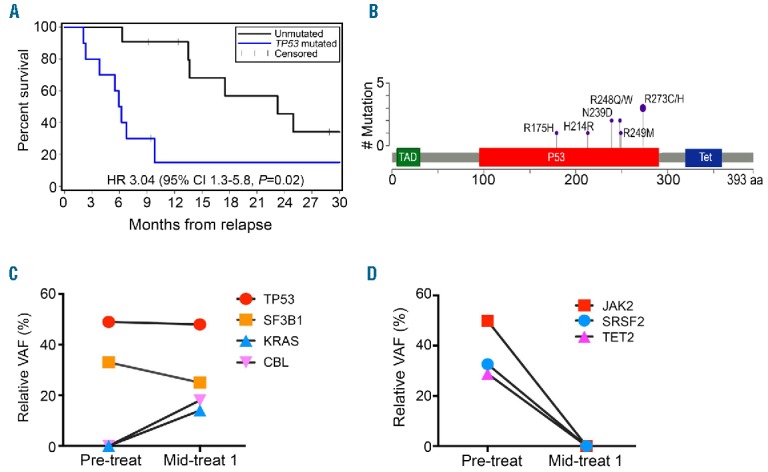Figure 2.

Persistent TP53 mutation in post-hematopoietic cell transplantation (post-HCT) relapse and unfavorable survival. (A) Kaplan-Meier estimates of OS for patients with and without the TP53 mutation, and multivariate analysis (hazard ratio, HR). Patients with persistent TP53 mutation had unfavorable survival despite azacitidine treatment. (B) Mutations and frequency of each individual mutation in the TP53 gene on a linear protein with its domains and frequency of the mutations on the y axis. Mutations were present in pre-HCT diagnostic marrow and persisted in post-HCT relapse. TAD: p53 transactivation motif; P53: p53 DNA-binding domain; Tet: p53 tetramerization motif. (C and D) Progressive changes in mutational burden during treatment with hypomethylating agents. Serial bone-marrow samples were analyzed while patients received azacitidine. Relative variant allele frequency was calculated within recipient cells by comparing known recipient specific single nucleotide variants present in pre-transplant samples and post-HCT relapse samples. Representative mutation profiles in individual patients during treatment. (C) Mutations in TP53 persisted and mutations in the diagnostic samples re-emerged later in non-responders. (D) Clonal mutations disappeared in responders.
